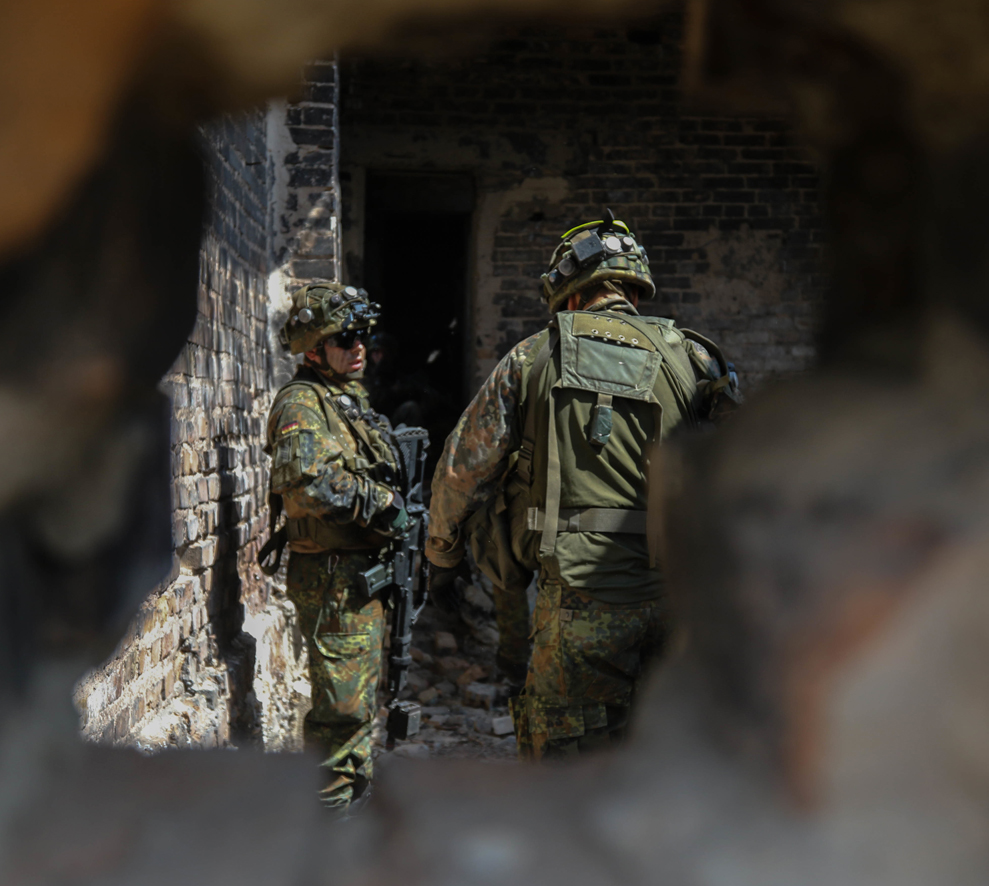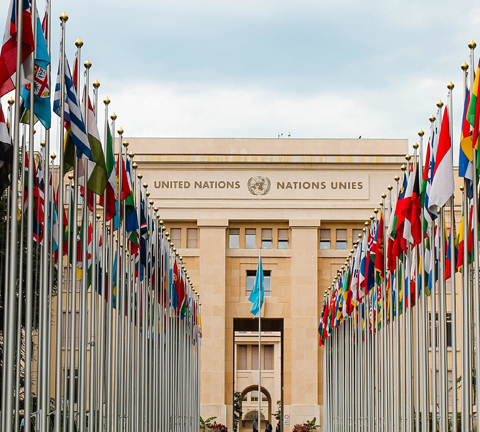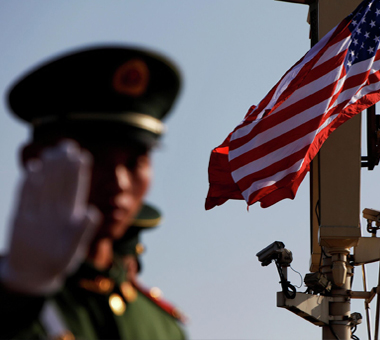Introduction
This special report monitors the developments of terrorism in different countries and regions, and provides -in an intensive reading- an analysis of the spread of this global phenomenon, based on the results of the Global Terrorism Index 2022 (GTI) issued by the Institute for Economics and Peace (IEP) in Sydney, which was published for the ninth consecutive year in March 2022.
In this context, the results showed an interesting sub-trend represented in the decrease in terrorism-related deaths globally to 7,142 deaths in 2021; a decrease of 1.1% compared to 2020, due to the decrease in the severity of terrorist operations which resulted in 1.6 deaths per operation but now it causes 1.4 deaths. Out of the 163 countries included in the “Global Terrorism Index”, 105 countries did not record any deaths or terrorist operations in 2021.
On the other hand, 2021 witnessed an increase in terrorist operations by 17%, to reach approximately 5,226 operations. The reasons for this may be attributed mostly to the surge of terrorist operations in South Asia - especially Myanmar - and Africa's Sahel region and sub-Saharan Africa, which is a substantial departure from the conflict in Iraq and Syria.
Afghanistan, Iraq, Somalia, Burkina Faso, Syria, Nigeria, Mali, Niger, Myanmar, and Pakistan appeared, in this order, on the list of the top ten countries most affected by global terrorism.
In a related context, the data showed that only four Arab countries were free of terrorism in 2021: the Emirates, Qatar, Oman, and Kuwait, all of which are from the Arab Gulf states. The ranking of the rest of the Arab countries on the Global Terrorism Index is as follows:

Russia ranked forty-fourth, Ukraine ranked sixty-second, while the United States ranked twenty-eighth. However, this index is likely to be affected by the Ukrainian crisis, which means- by the end of this year -estimates related to the map of global terrorism will have differed.
On the other hand, terrorism-related incidents in the West have been declining since 2018, with a decrease of 68%, due to the COVID-19 pandemic and the ongoing restrictions regarding travel and gatherings.
Despite initial expectations that the pandemic would exacerbate the impact of terrorism in certain regions, it appears to have had little impact on terrorism in 2020 and 2021.
In their statements, terrorism indexes also confirm that armed conflict is the main driver of terrorism, as the ten countries most affected by terrorism in 2021 were involved in armed conflict in the previous year. This includes four countries: Afghanistan, Nigeria, Somalia and Syria, which witnessed conflicts that resulted in more than 1,000 deaths a year.
The relationship between armed conflict and terrorism has connotations related to the intensity of the increase in conflict whenever violence against the police and the army increases, as well as violence against civilians that is seen as linked to the enemy.
Among the indicators of the increase in violence intensity last year, this was also linked to the presence of larger concentrations of weapons, and the lack of state control over its geographical borders. The data also indicates that, since 2007, about 92% of deaths that resulted from terrorism have occurred in conflict areas. Over the past three years, 95% of deaths resulted from terrorism have also occurred in countries affected by conflict, then rose to 97.6% in 2021.
Trends related to terrorism
The year 2021 witnessed a number of new trends revealing the multiple facets of global terrorism, along with many subtle details in terrorism indicators. To avoid going into these details; the general trends of the phenomenon were highlighted as a guide for experts, research and studies centers, and decision makers. The following is a presentation of the most prominent trends, arranged according to their importance and expression in the development of this phenomenon:
- Transferring terrorist operations to Africa’s Sahel region and Sahara.
- The decrease in the number of terrorist operations in the Middle East and North Africa.
- Taliban rules Afghanistan again.
- The increase in political terrorism in the United States of America and Western Europe.
The arena of terrorist operations has shifted to Africa’s Sahel and Sahara
It can be said that with the defeat of ISIS in Iraq and the decline of the conflict in Syria, ISIS and its affiliated groups shifted their operations to sub-Saharan Africa and the Sahel region in particular. Accordingly, deaths in the Sahel region were 35% of the global terrorism deaths in 2021, compared to only 1% in 2007.
Data indicates that five of the ten countries most affected by terrorism are located in Africa: Somalia, Burkina Faso, Nigeria, Mali, Niger, while Cameroon ranked 11th, all of them - except for Somalia - are located in the Sahel region.
The Cameroonian, Nigerian and Chadian forces fighting terrorism in the Lake Chad Basin, and the related attacks on military sites, confirm that terrorist attacks have increased remarkably since the announcement of the death of Boko Haram leader Abubakar Shekau. Military officials from the three countries said that ISIS is completely changing its terrorist tactics in attempts to win the sympathy of civilians in the Lake Chad Basin, and is emerging as a terrorist group that takes command of Boko Haram, which has been weakened by the killing of its leader Shekau.
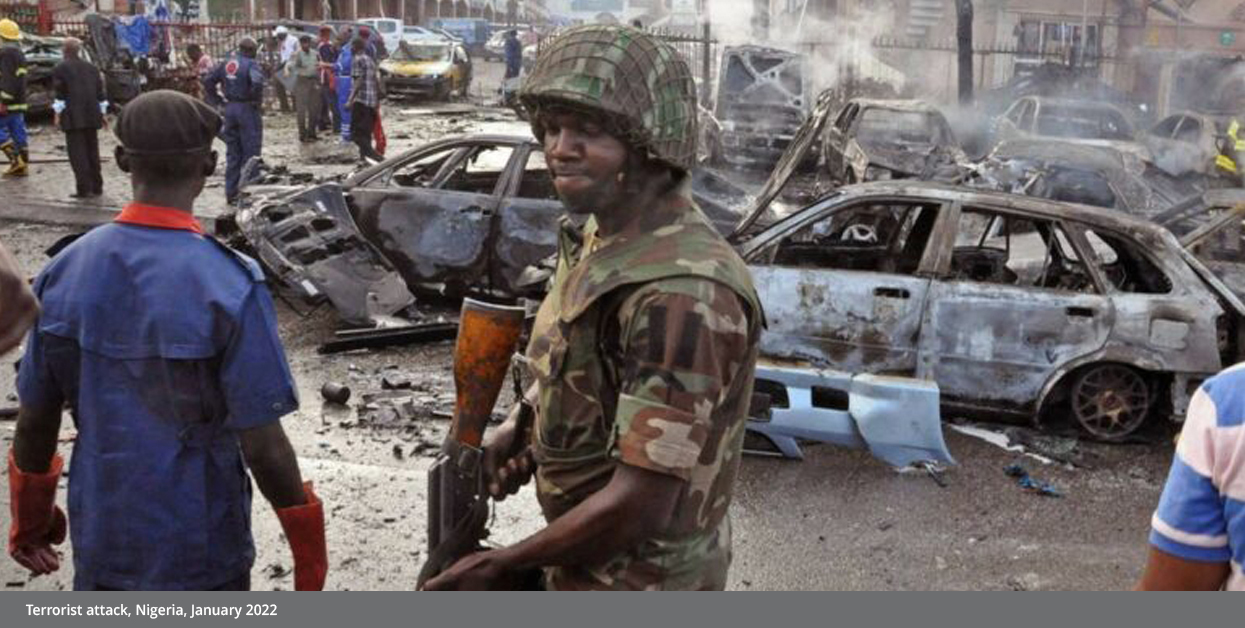
Also in Niger, ISIS claimed responsibility for 23 attacks, killing an average of 15.2 people per attack. The increase in terrorist activities in Niger is part of a larger increase across the Sahel region, with similar surges seen in Mali and Burkina Faso over the past few years.
It is also mentioned that the armed forces in Burkina Faso, in their fight against terrorist attacks, announced that joint operations with the Nigerien army had killed at least 100 extremist rebels during 2021, arrested 20 suspects, and confiscated important equipment from them in late 2021.
While the army's operations against extremist rebels took place amid anti-government protests in Burkina Faso in which crowds demonstrated over the government's inability to stop attacks by groups allied with al-Qaeda and ISIS throughout this Western African country.
The escalation of terrorist attacks in Burkina Faso in 2021 led to the deaths of thousands and the displacement of more than a million people, in addition to acts of violence against the country's security forces, which resulted in the killing of more than 50 gendarmes in the Sahel region.
As for the Democratic Republic of the Congo and Uganda, local media reported in December 2021 that what they called "Islamic militants" belonging to the "Allied Democratic Forces" -forces linked to ISIS- had killed 16 people in two rural towns in eastern Democratic Republic of the Congo, as well as killing hundreds of civilians in eastern Congo since 2019, in accusations leveled against it, in addition to a series of recent bombings carried out in Uganda.
On a related level, in West Africa, the Republic of Togo was subjected to the first terrorist attack in November 2021 by a group affiliated with Al-Qaeda on its territory. According to a statement by the country's security forces, the attack took place in Kbindjal, in the town of Sanluaga, along Togo's northern border with Burkina Faso.
The attack, which started from the Burkina Faso side of the border, was repelled, without casualties on both sides. The Togolese authorities pledged to develop a strategy to prevent terrorist attacks, as well as to invest in development projects in the border area, which would reduce the recruitment of individuals.
It is worth noting that, in light of the escalation of terrorism, the Sahel region has become increasingly violent over the past 15 years, and most terrorist operations are located in border areas where government activities there are minimal, in addition to an increase in deaths by more than 1,000% between 2007 and 2021. This indicates a strong association between criminal activity and terrorism in the Sahel.
On the other hand, there are no signs of terrorism decline in the region. Rather, its indicators are increasing. It seems that the main motives for this increase are complex and systematic, including water misuse, food shortages, malnutrition, strong population growth, and weak governments, coupled with the international community's neglect of the region's problems in general.
The decrease in death toll resulting from terrorism in the Middle East and North Africa
The number of "deaths" resulting from terrorism in the region decreased by 39% over the past three years. However, the total number of terrorist "operations" did not decrease by the same percentage, especially in Iraq and Syria.
It is certain that ISIS is no longer as strong as it was in 2014, but it still launches some terrorist operations from time to time, especially in Iraq, which ranked second on the global terrorism index.
After many years of improvement, Iraq recorded more deaths in 2021 than the previous year, an increase of 15% to 524 deaths due to terrorism. The attacks increased by a third, driven by ISIS increased activity.
In the midst of this uncomfortable political atmosphere for Iraq, in December 2021, the Pentagon announced, “The US military has ended its combat mission in Iraq, changing its role into a training and advisory one instead.” Under the terms of the July 2021 agreement, the United States ended the mission against ISIS; however, about 2,500 US troops are still in Iraq on missions related to advising and assisting the Iraqi security forces. This is an arrangement that was finalized after the conclusion of technical talks between Washington and Baghdad in December 2021.
On the other hand, in Syria, the situation does not seem to differ from Iraq, except in minute details, especially since ISIS operations have emerged in the Syrian Badia border areas with Iraq and Jordan, and the Al-Tanf Triangle area. Therefore, Syria’s ranking remained fifth on the Global Terrorism Index for the year 2021.
Contrary to ISIS; Hayat Tahrir al-Sham (formerly Jabhat al-Nusra) is trying in all possible ways to polish its image and draw inspiration from the experience of the Taliban of Afghanistan by appearing as a civil political organization that seeks political participation and local community service. This was demonstrated through the repeated appearance and activities of Abu Muhammad al-Julani, in increasing his media presence, participating in civil activities, visiting clan elders and patients, and strengthening his presence in the activities of the "Government of National Security", which is just a civilian front for Hay'at Tahrir al-Sham.
Taliban rules Afghanistan Again
Despite the improvement of Afghanistan’s rank on the “Global Peace Index” for the year 2022 by 6 degrees, the data of the apparent numbers indicate that it ranked 153rd out of 163 countries globally, where Afghanistan remained the country most affected by terrorism for the third year in a row in 2021, followed by Iraq and Somalia.
The figures show that the death rate increased due to terrorism by 14%, with 1426 deaths. Its noteworthy that its increase was due to the escalation of terrorist operations, and the deadliest terrorist attack in Afghanistan since 2007 occurred in August 2021, during the withdrawal of US forces From the country, when a suicide bomber from the Khorasan Organization (ISIS) launched two suicide bombings at Kabul International Airport that killed 170 people and wounded more than 200 others.
In August 2021, the US and international forces finalized a hasty withdrawal from Afghanistan, which accelerated Taliban’s control on the country, and raised the specter of its transformation again into a safe haven for Al-Qaeda and similar terrorist and extremist groups. This raised many questions, but the most important question in details of the terrorism file in Afghanistan is: Will Afghanistan be a haven for terrorist groups again?
In principle, many experts indicated that Taliban did not want to turn Afghanistan into a safe haven for jihadist organizations, as it was in the past. For example; in an article he published in the American "Foreign Affairs" magazine, Daniel Byman, an American expert on Middle East affairs and terrorism, ruled out that Afghanistan would be a haven for global jihadist organizations again, for many reasons, the most important of which are: Al-Qaeda has lost much of its former strength, and ISIS is an enemy of Taliban. Moreover, Taliban has learned the lessons of the past and is now behaving differently.
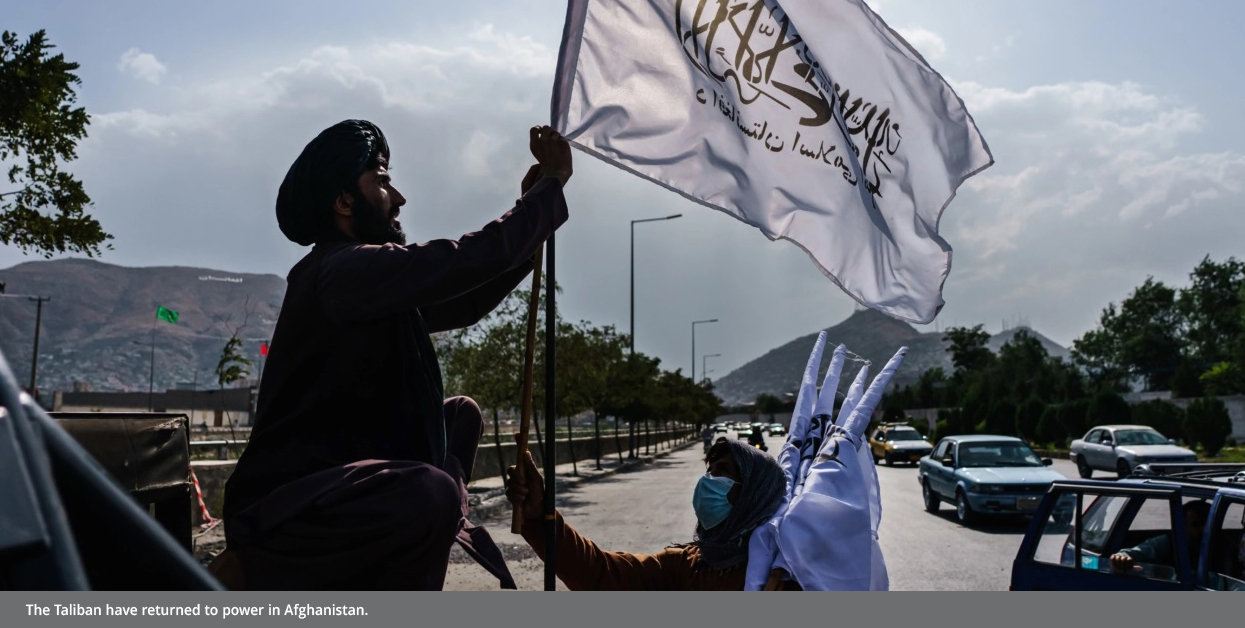
Christian Wagner, an expert on South Asian affairs at the "German Institute for International Policy and Security" in Berlin, ruled out that Afghanistan would be a haven for jihadist organizations again, as he said, “Taliban does not want Afghanistan to be a pariah state, it rather seeks the recognition of the international community.”
On the military and security side, US Defense Department officials have expressed concerns that these groups could become a source of terrorist operations and an international threat at some point in the future.
If this scenario occurs, Taliban’s operations will keep confronting the threat of the competition of “ISIS-Khorasan” organization and the interventions of Iran on the other hand.
In addition to containing or confronting the “ISIS-Khorasan” organization, whose operations exceeded (77) terrorist ones during four months, according to official statistics, and defining the parameters of the Taliban's policy in dealing with "Al-Qaeda", the so-called "Islamic Movement of Uzbekistan", the "Imam Bukhari Brigade", and the so-called "Turkistan Islamic Party”.
Taliban faces a big challenge in controlling the borders with Iran. By employing its distinguished relations with leaders in the “ISIS” organization, Tehran can destabilize security in Afghanistan and make the stability of the Taliban’s rule an almost impossible task.
In addition to Tehran’s ability to gather and secure the transfer and transit of terrorist elements (unregulated) from Syria to the heart of the capital, Kabul, as well as securing the transportation of terrorists present in areas of chaos and armed conflict, such as Yemen and Libya.
The movement fears that its adoption of the openness policy to win local and international public opinion will be interpreted as a retraction from the principles of the Islamic movement, which may harm its image among its followers, and prompt them to split from it and join the Islamic organizations on the Afghan scene.
The increase in the spread of political terrorism in the United States of America and Europe
In general, readings show that the United States recorded a significant improvement in the impact of global terrorism in 2021. It recorded its lowest rank -28th globally- on the "Global Terrorism Index (GTI") since 2015.
Regarding terrorist operations, seven attacks resulted in three deaths in the United States. While terrorist attacks in the West have decreased since 2018, by 68%. Only 59 attacks were recorded in 2021.
Political terrorism (represented by the far right and the far left) has now surpassed the so-called religious terrorism in the West, with a decrease of 82% in attacks with religious motivations in 2021. There were 40 politically motivated attacks, compared to only three religiously motivated attacks.
Political terrorism has increased steadily over the past decade, with 73% of attacks in the West attributed to politically motivated groups and individuals. The majority of the increased politically motivated terrorism in the West is a result of the rise of far-left terrorism.
It is reported that in 2011, far-left groups and individuals were responsible for two attacks, while far-right groups claimed responsibility for five attacks. However, in 2021, far-left attacks increased dramatically, reaching 38, while far-right groups claimed responsibility for only two. Of the politically motivated attacks in 2021, none was attributed to any official terrorist group from the far right or the far left.
Data also indicates that improvement at the level of global terrorism has been accompanied by a trend in increasing the risk of political terrorism represented by the terrorism of the far right. The most notable example of this was on January 6, 2021, when a large group of individuals violated and threatened the security of the US Capitol while Congress was in session. Violence incidents erupted, wounded dozens of police officers of the District of Columbia and the US Capitol Police and resulted in the killing of one of its members, and four civilians.
Therefore, in light of this incident and the violent threat to the work of the US Congress, a debate is taking place among policy makers to answer the question of whether the participants and their actions can be classified as domestic terrorists and domestic terrorism, and respectively, there is the classification of local far-right groups there, such as: Boogaloo Bois and the Proud Boys allegedly involved in the attack, as terrorist organizations”.

It is noteworthy that the “Congressional Research Service” published an important report in August 2020, in which it clarified that confronting the issues related to the increase in mass shootings and accidents, which are of a racist nature, requires considering proposals related to three main points:
1- Classify domestic terrorism as a separate federal crime.
2- Grant law enforcement agencies similar authority to the ones they have in cases of external terrorism.
3- Adjust government priorities related to law enforcement in order to increase the focus on domestic terrorism.
Thus, the changing nature of political terrorism has led to remarkable changes in the "structure" and "behavior" of the US administration towards terrorism, especially in confronting domestic terrorism and the threat of extremist right-wing groups.
One of the most important changes was the establishment of the "Internal Counter-Terrorism Unit" by the Ministry of Justice. The Department's Chief of Homeland Security, Matthew J. Olsen, testified before the Senate Judiciary Committee in January 2022 that the Department of Justice is creating the "Internal Counter-Terrorism Unit” at a time when the threat of violent extremism has increased, and the number of FBI investigations has doubled since spring 2020.
Olsen added that the National Security Division has a counterterrorism team, but a group of lawyers will now be dedicated to confront the domestic threat and ensure that cases are handled properly and effectively across the agency and federal law enforcement.
This step is in line with a pledge by Attorney General Merrick B. Garland prioritizes combating domestic extremism.
In 2021, the Biden administration had revealed a national strategy to address domestic extremism, in which it called for preventing the recruitment of extremist groups, and strengthening the exchange of information through American law enforcement agencies; however, the Congress has not yet taken any initiative to enact laws related to domestic terrorism, which resulted in the proposals of the Congressional Research Service report.
The opinions expressed in this study are those of the author. In no way does Strategiecs take responsibility for the views and positions of its author on security, economic, political, social, and other issues, and such views and/or positions do not reflect those of Strategiecs.
Keep in touch
In-depth analyses delivered weekly.

Related Analyses:








